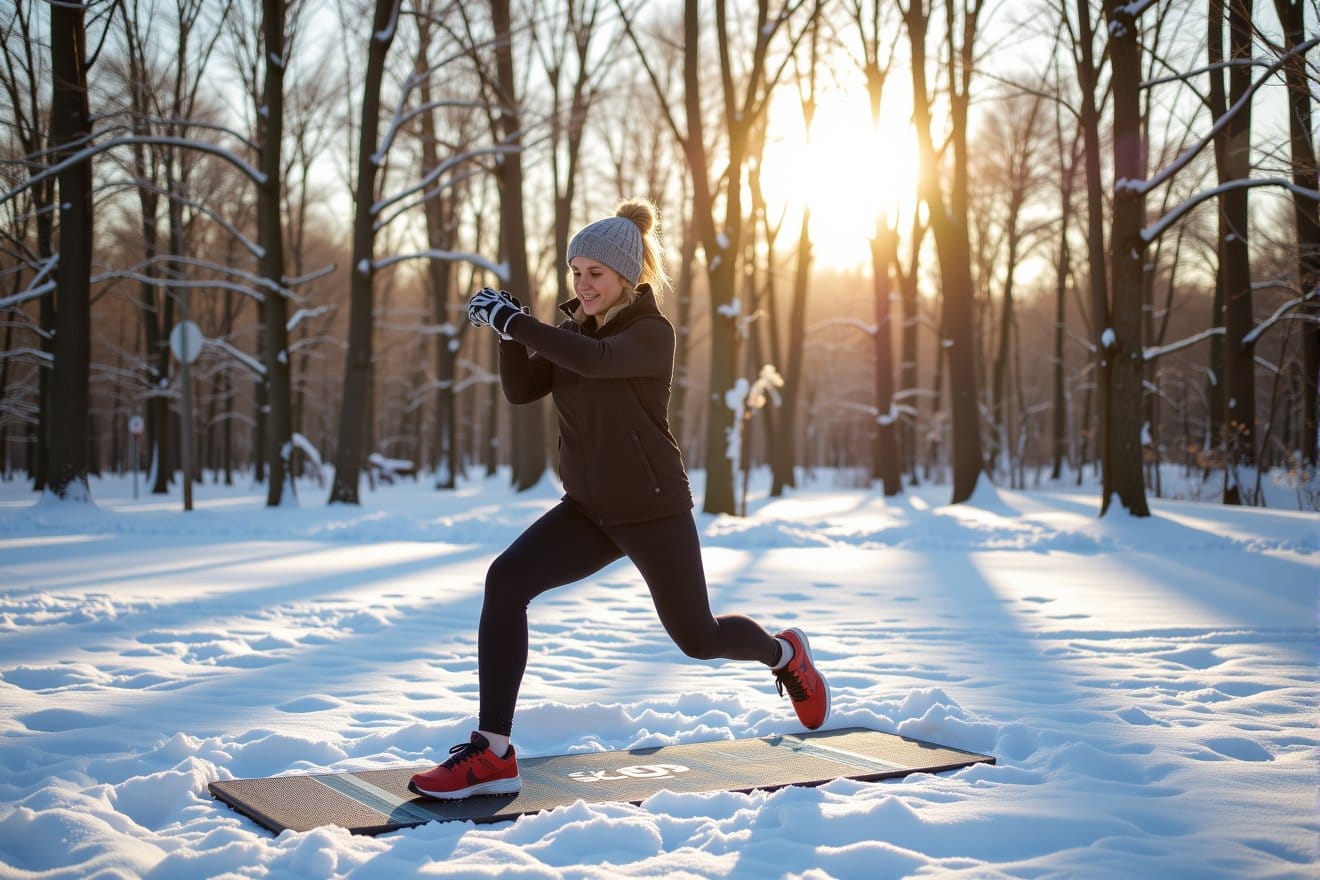Winter Gains: How to Keep Strength Training in Cold Weather
When temperatures drop and the days get shorter, it’s easy to swap your workout gear for a cozy blanket and a cup of hot cocoa. But winter is actually one of the best times to focus on strength training—building muscle, improving endurance, and staying in shape even when the world outside feels like an icebox. Whether you're braving the outdoors or sticking to indoor workouts, here’s how to make cold-weather strength training work for you.
1. The Importance of Strength Training in Winter
Winter workouts are more than just a way to stay fit—they help combat seasonal sluggishness, keep your metabolism fired up, and improve circulation in cold weather. Strength training specifically helps maintain muscle mass, which is crucial because many people tend to be less active during colder months. Plus, lifting weights or doing bodyweight exercises can generate heat, making you feel warmer and more energized despite the chill.
2. How to Stay Motivated When It’s Freezing Outside
Staying motivated in winter can be challenging, but a few tricks can help you push through:
- Set a Goal: Whether it’s increasing your squat weight, mastering a new exercise, or just staying consistent, having a target keeps you focused.
- Find an Accountability Partner: A friend or trainer can help you stay on track, even on the coldest days.
- Remind Yourself of the Benefits: Exercise releases endorphins, which can fight off the winter blues and seasonal affective disorder (SAD).
- Reward Yourself: Plan a treat after your workout, like a warm smoothie or a relaxing hot bath.
3. Warming Up Properly in Cold Weather
Cold muscles are more prone to injury, so a good warm-up is essential. Spend at least 10-15 minutes doing dynamic movements like:
- Jumping jacks or high knees to get your blood flowing.
- Arm circles and shoulder rolls to loosen upper body joints.
- Bodyweight squats or lunges to engage lower-body muscles.
- Foam rolling to improve flexibility and prevent stiffness.
4. Strength Training Indoors: No Gym, No Problem!
If heading to the gym or training outdoors isn’t an option, build strength at home with minimal equipment:
- Bodyweight Exercises: Push-ups, squats, lunges, and planks can be done anywhere.
- Resistance Bands: A great alternative to weights that takes up little space.
- Dumbbells or Kettlebells: Perfect for adding resistance to your training.
- Stair Workouts: Running or lunging up and down stairs builds lower-body strength and endurance.
5. Outdoor Strength Training in the Cold: What You Need to Know
If you prefer working out outside, dress in layers to regulate body temperature. Start with a moisture-wicking base layer, add an insulating middle layer, and top it off with a windproof jacket. Don’t forget gloves and a hat to protect extremities from the cold.
Also, adjust your workout routine to stay effective in lower temperatures:
- Shorten Rest Periods: Keep your body moving to maintain warmth.
- Use Park Benches and Stairs: Outdoor spaces can double as gym equipment.
- Focus on Compound Movements: Squats, deadlifts, and push-ups engage multiple muscle groups and keep your heart rate up.
6. Nutrition Tips for Winter Training
What you eat plays a huge role in performance and recovery, especially in cold weather. Focus on:
- Protein-Rich Foods: Eggs, lean meats, tofu, and beans to support muscle repair.
- Healthy Carbs: Oats, quinoa, and sweet potatoes provide sustained energy.
- Hydration: Cold weather reduces thirst cues, but staying hydrated is just as important as in summer.
- Vitamin D: Shorter days mean less sunlight exposure, so consider foods like salmon, mushrooms, and fortified dairy products.
7. Adjusting Your Routine for the Season
Winter might be the perfect time to shift your workout focus. Consider:
- Building a Strength Base: Use this season to focus on heavier lifts and muscle growth.
- Trying a New Workout Plan: Experiment with new strength-training programs or cross-train with activities like yoga or Pilates.
- Prioritizing Recovery: Cold weather can increase stiffness, so prioritize stretching and mobility work.
Conclusion: Stay Strong All Season
Winter isn’t an excuse to hibernate—it’s an opportunity to level up your strength training and build resilience. Whether you hit the gym, brave the cold, or train at home, staying active in winter keeps you healthy, strong, and ready for whatever challenges come your way. So grab your gear, embrace the season, and keep pushing forward!







Comments